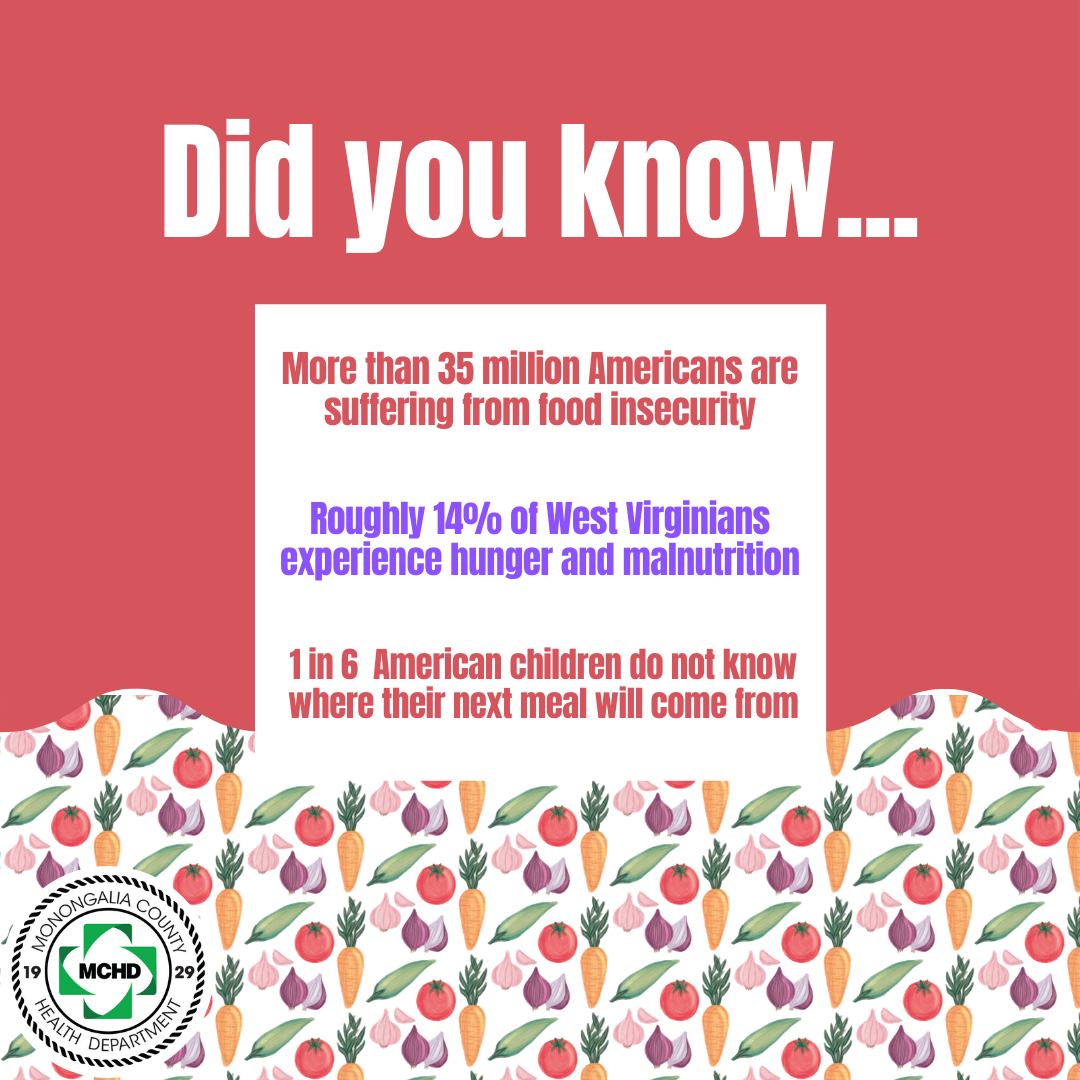Food is medicine: How are you fueling your body?

Oct. 15, 2020
By Peyton Azar
How many Americans would you guess suffer from hunger and malnutrition? Maybe a similar amount to the population of New York City, roughly 9 million. Or possibly even as many people who reside in Florida, which is home to approximately 21 million people.
Unfortunately, both of these guesses are significantly fewer than the number of Americans who suffer from hunger, which Feeding America reports is more than 35 million. To put that in perspective, that’s more people than Texas’s entire population, the second most populated state in America.
Malnutrition Awareness Week was observed earlier this month, driving home the importance of focusing on nutrition daily, especially with how prominent malnutrition is here in West Virginia.
Out of the 35 million Americans who suffer from hunger and malnutrition, 250,600 are West Virginians. With a population of 1.8 million, this means that roughly 14% of West Virginians are food insecure and malnourished.
However, malnutrition does not only affect those who suffer from hunger. Malnutrition also affects individuals who are eating, but not the right food. A poor diet deficient in vitamins, protein, dairy and other essential nutrients also leaves one malnourished.
There are several contributing factors as to why the number of malnourished Americans is so high. Monongalia County Health Department is home to the federal Women, Infants, and Children (WIC) program in six counties, including Monongalia County.
MCHD WIC nutritionist Jason Nguyen points out that two of the main factors of malnutrition in the area are the expense and accessibility to healthy and nutritious foods.
The high expense of healthy, nutrient-packed foods is no secret. For instance, a pound of organic chicken breast at a supermarket is almost $8, but an eight-pack of hot pockets only costs $3.42. Although the chicken breast is healthier and more nutritious, the pack of hot pockets contains much more food and is over 50% cheaper, Nguyen noted.
With these kinds of costs and quantities being standard in America, it is clear why the country has such a large number of malnourished people.
Unfortunately, continued malnutrition from both hunger and poor diets can lead to a slew of short and long-term health problems. According to the Centers for Disease Control and Prevention health problems from malnutrition include mental health decline, anemia, poor eyesight, weak immune systems, brittle bones, delayed cognitive development and abilities, poor digestion health, diabetes, heart problems and more.
These are some scary health ailments to deal with at the cost of malnutrition, so let’s discuss a diet that would prevent such health problems. Harvard’s School of Public Health suggests a diet rich in…
Fruits and Vegetables: Fruits and veggies are a great way to provide your body with a lot of vitamins, nutrients, and natural sugars. Keep in mind that each kind of fruit and vegetable offers different vitamins and nutrients, so try to get a variety of these foods daily. A great way to make sure you’re getting all the nutrients produce has to offer is by trying to get something from every color of the rainbow.
Whole Grains: Whole grains are chalked full of fiber, carbohydrates, vitamins, healthy fats and even protein. With such great benefits to whole grains, it’s imperative to add them to your diet. Many of your favorite foods probably have a whole wheat substitute, which is a healthy and easy switch. Whole wheat bread, pasta, popcorn and even Pepperidge Farm Goldfish crackers are sure to be a crowd-pleaser.
Protein: Protein is a vital part of one’s diet, as it provides essential nutrients that keep your bones, muscle, skin, hair, brain and practically everything else in your body powered up and healthy. Lean meats like chicken, turkey and fish are great ways to get your daily protein intake, along with nuts, seeds, Greek yogurt, tofu, eggs, beans and more.
Calcium: Calcium is extremely important for keeping strong bones, teeth and an overall healthy body. Some great foods to consume to maintain a healthy calcium intake are Greek yogurt, skim milk, kale, spinach and soy.
Healthy Fats: Understanding the difference between healthy and unhealthy fats can sometimes be tricky. Typically, you’ll want to avoid trans fats and focus your fat intake on unsaturated fats. Trans fats are often found in processed food and hydrogenated oils. Unsaturated fats can be found in vegetable oils (sunflower, soy, olive, etc.,) nuts, seeds and fish, which are all great forms of healthy fats.
Like we talked about before, eating healthy can often be pricey. So, how can we eat healthy on a budget?
● Eat at home. Avoiding fast foods and restaurants is great for your physical and financial health.
● Grow a garden. MCHD WIC nutritionist Jason Nguyen recommends starting a home garden, which is sure to save some money at the store. So, grab some seeds and soil and create your own produce aisle at home.
● Avoid unhealthy foods at the grocery store. The less you spend on chips and ice cream, the more room you’ll have in your stomach and budget for those nutrient-packed foods.
● Buy generic brands. Most grocery stores have a generic brand of healthy foods. Visit your favorite grocer to see what they have.
● Buy in bulk. Buying in bulk is always cheaper. Although the price and size may look a bit daunting at first, you’re paying less for each serving than you would be otherwise.
● Use coupons. There’s no shame in the coupon game! Give your kiddos the task of cutting out the coupons for your favorite nutritious products. They’ll love having a project, and you’ll love all the money you save.
Peyton Azar is a public information office intern at Monongalia County Health Department.